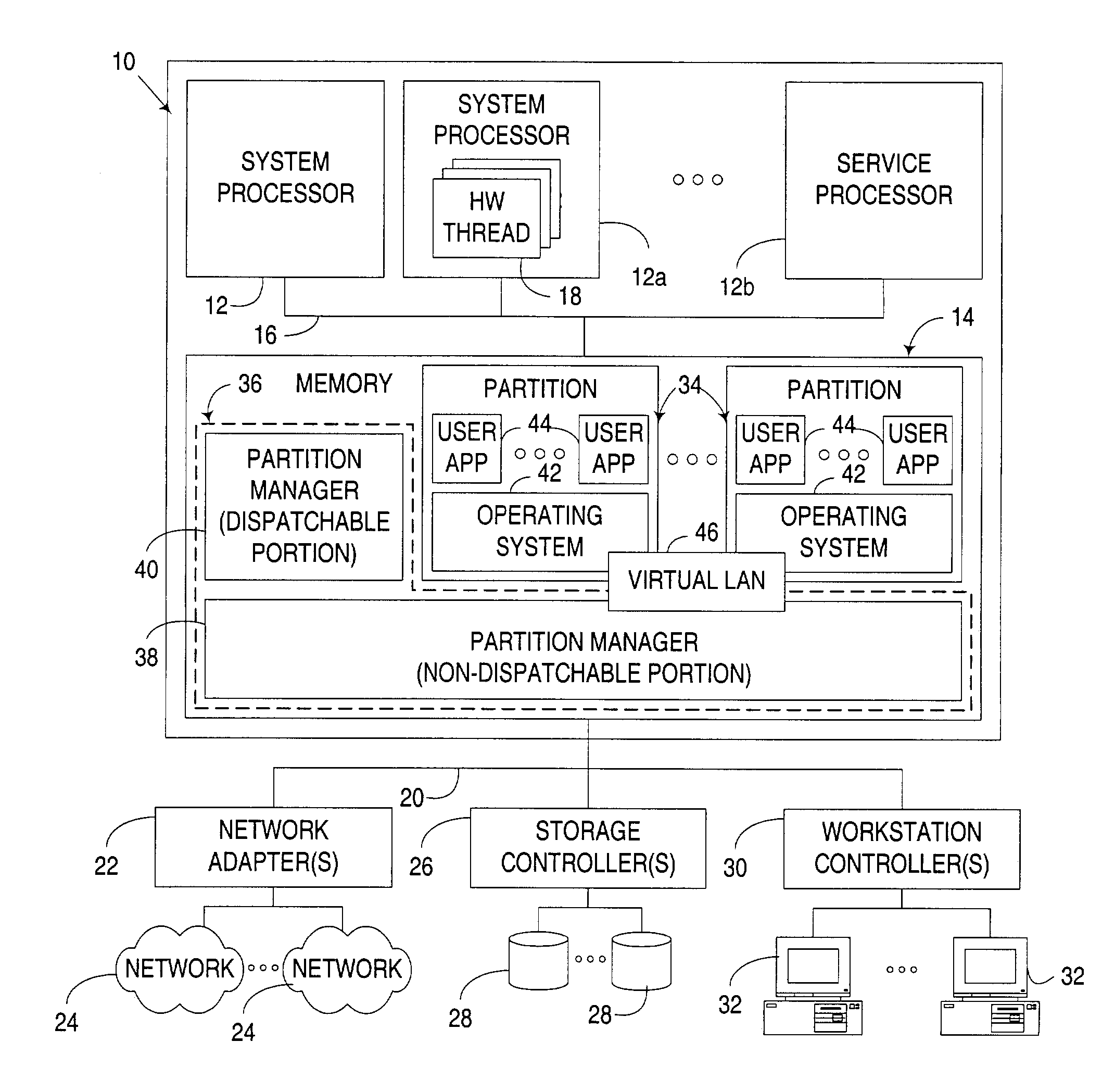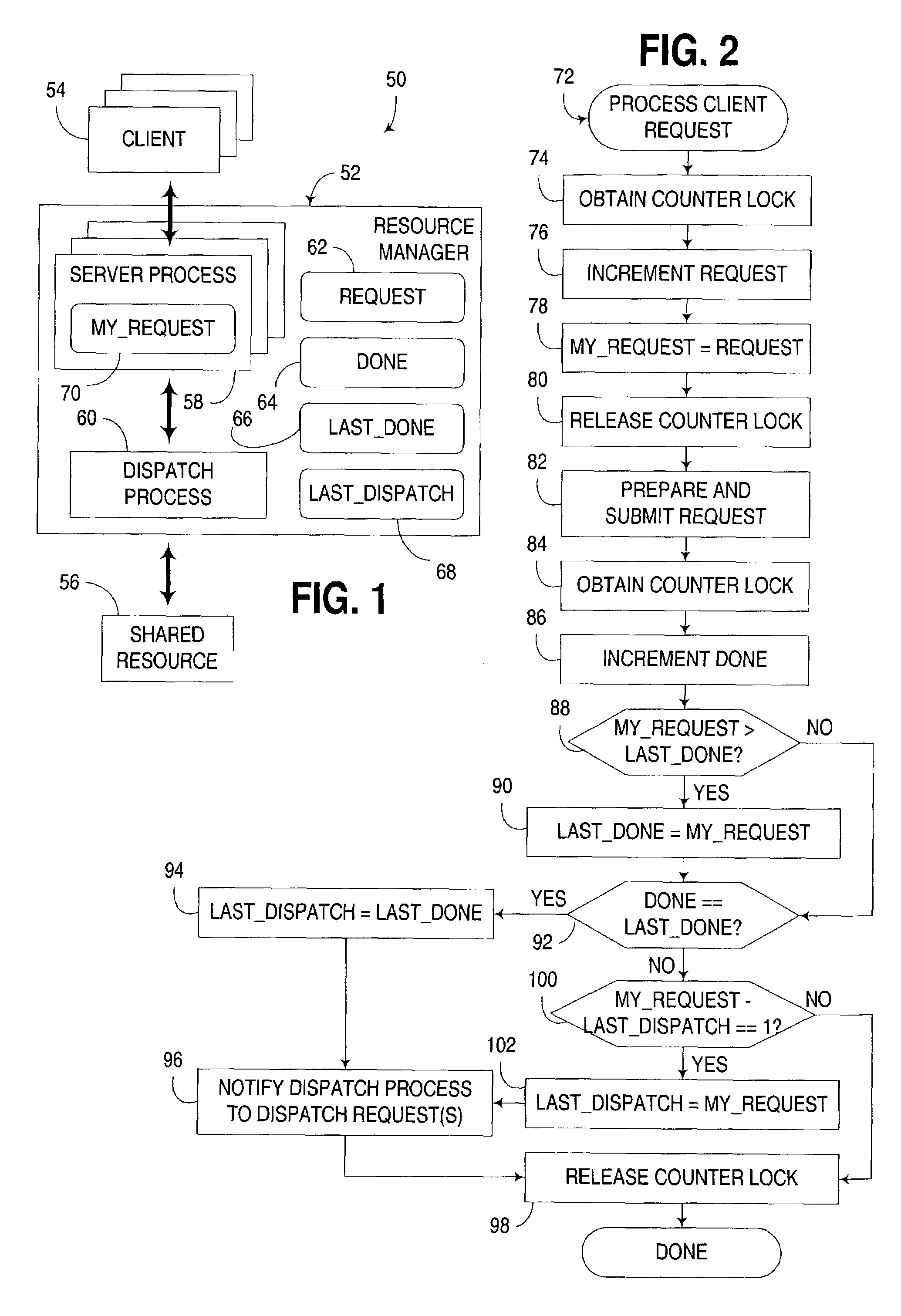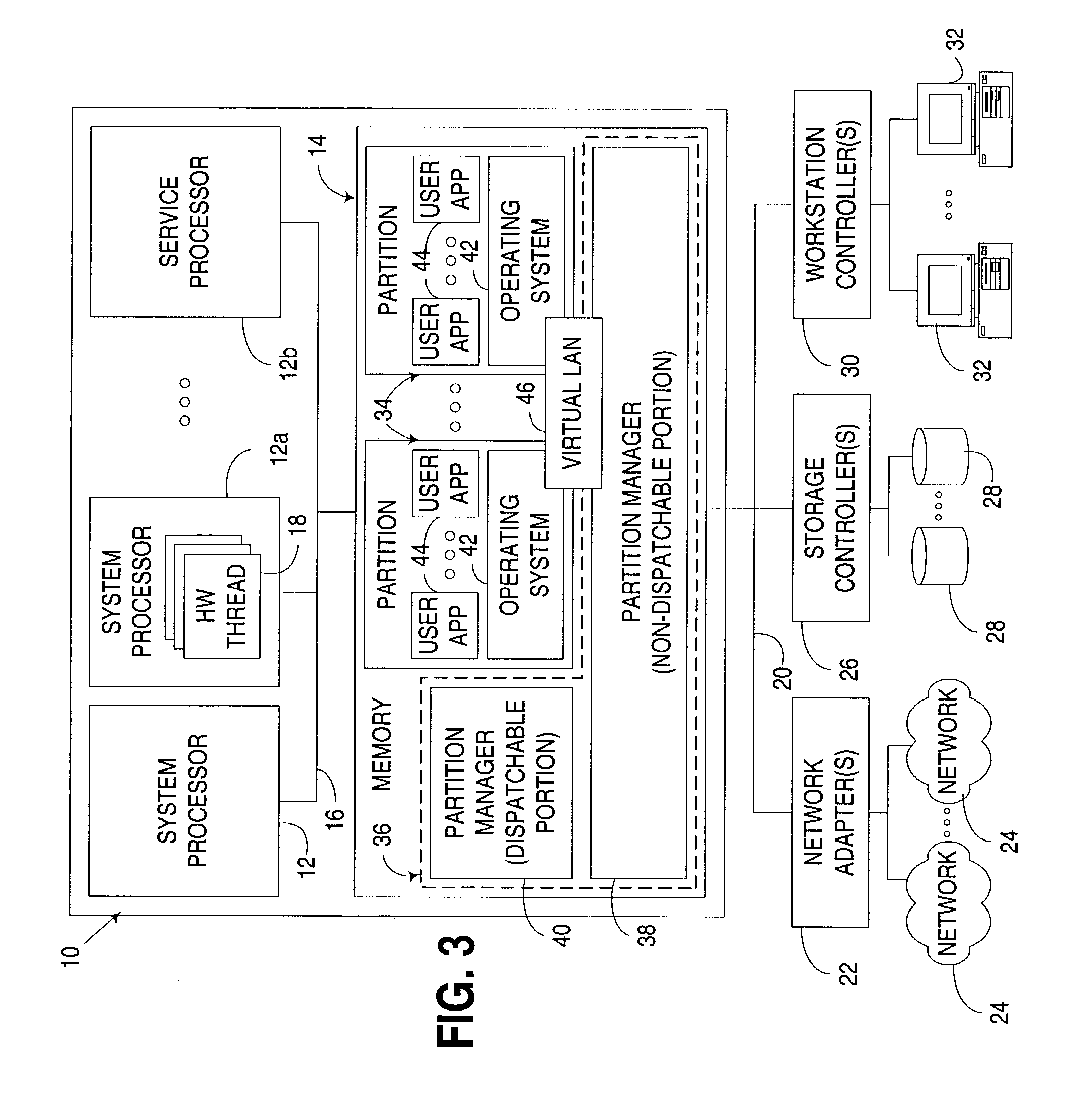Concurrent access of shared resources utilizing tracking of request reception and completion order
a technology of request receipt and completion order, applied in the field of computer software, can solve the problems of increasing system complexity, occupying a significant amount of time, indeterminate results and potential system errors, etc., and achieve the effect of reducing the overhead of individual dispatches, limiting the duration of atomic operations, and reducing contention to shared resources
- Summary
- Abstract
- Description
- Claims
- Application Information
AI Technical Summary
Benefits of technology
Problems solved by technology
Method used
Image
Examples
Embodiment Construction
[0021]The embodiments discussed hereinafter track both the order in which requests that use a shared resource and that are issued by multiple clients are received, and the order in which processing of such requests are completed, in connection with the dispatch of the requests to use the shared resource. The requests are capable of being issued asynchronously, and moreover, are capable of completing out-of-order. As a result, requests are assigned unique identifiers as they are received, based upon the order in which the requests are received. Moreover, the number of completed requests is tracked, and a determination is made in connection with handling each request to determine if the processing of every other request issued prior to a most recently completed request has been completed. Once it has been determined that this condition has been met, each non-dispatched request, for which processing has completed, is then dispatched.
[0022]As will become more apparent below, the trackin...
PUM
 Login to View More
Login to View More Abstract
Description
Claims
Application Information
 Login to View More
Login to View More - R&D
- Intellectual Property
- Life Sciences
- Materials
- Tech Scout
- Unparalleled Data Quality
- Higher Quality Content
- 60% Fewer Hallucinations
Browse by: Latest US Patents, China's latest patents, Technical Efficacy Thesaurus, Application Domain, Technology Topic, Popular Technical Reports.
© 2025 PatSnap. All rights reserved.Legal|Privacy policy|Modern Slavery Act Transparency Statement|Sitemap|About US| Contact US: help@patsnap.com



